I live in Adamstown, Co Wexford, but I’m originally from New Ross. My father was a tailor in the middle of town. That’s the way we grew up, tailoring. 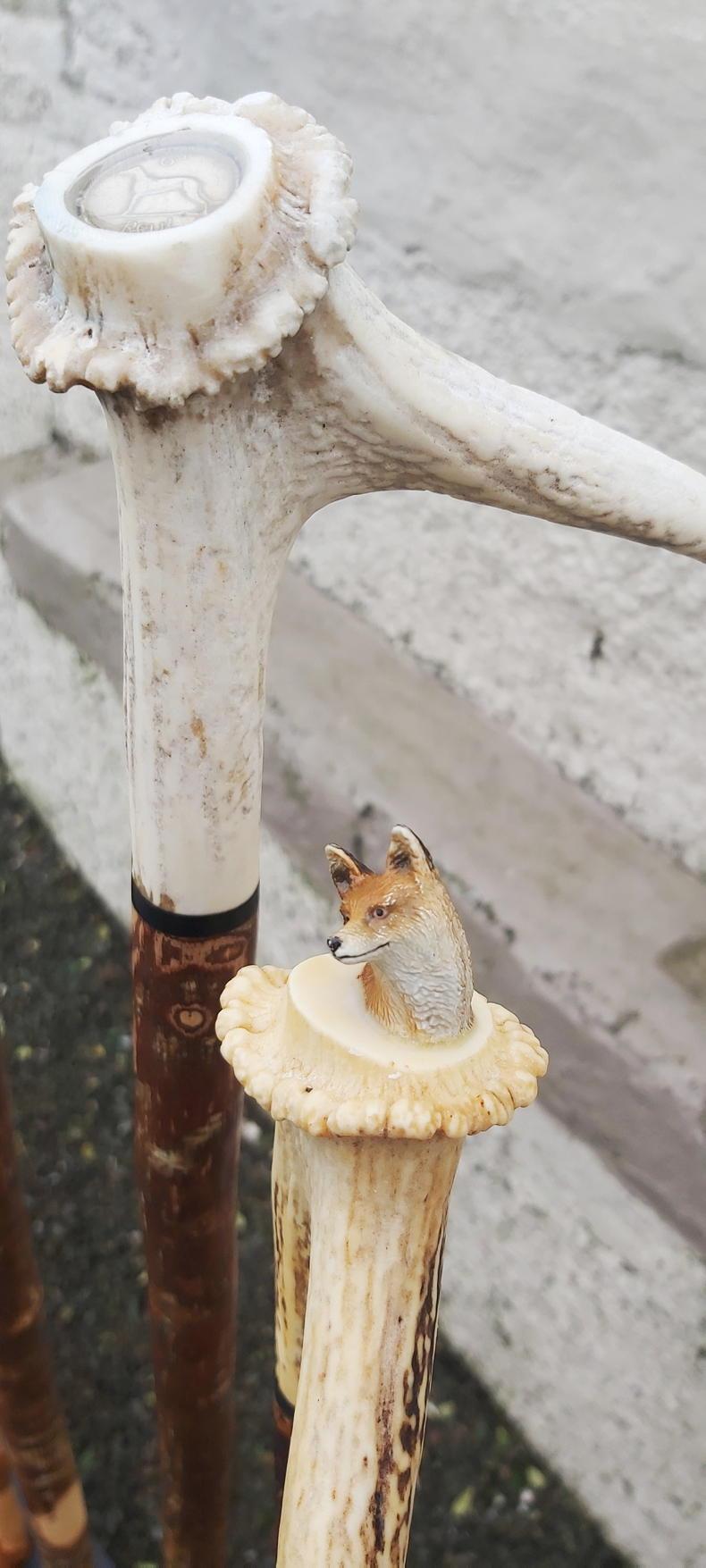
My grandfather was a tailor and his father was a tailor before him.
I grew up with suits and I still love a suit. I love clothes. A cap and coat, you couldn’t ask for better. I’ve always dressed well. I’m happy that way.
I went to school in Ross and I worked in engineering all my life. I worked down in Ross and then in Glanbia, it was Waterford Co-Op before that. I spent most of my years working for them. I was happy. That was a different time, a different life, but I always loved a stick.
The beginning
When I was young, I went to see a film below in the Good Counsel College in Ross and I saw five sticks standing on a dresser there. They never left me.
I remember exactly where I cut my very first stick and I know where I cut my last stick too. My first stick was on the railway line between New Ross and Glenmore. My father, God be with him, was a Glenmore man.
As I was growing up then I always tipped away with a stick from time to time. When I retired I did nothing for a year, actually. I got fed up, then I started walking the land, picked up a couple of sticks and worked on them.
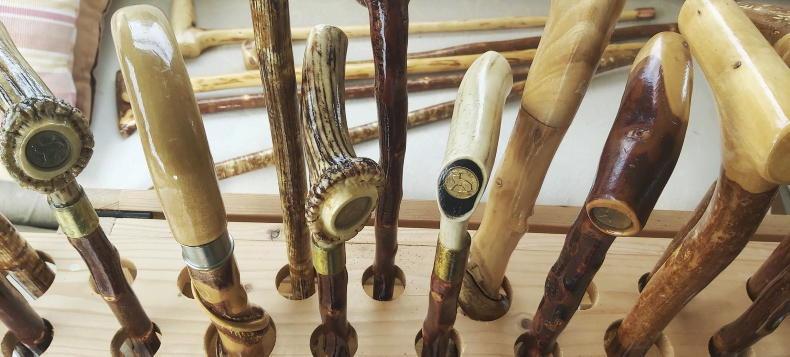
I said to myself, if there’s one there’s two and if there’s two there’s more. So I worked away. Over the years it just built up and up. The more you get into it, the more you want to do it. I started selling them at agricultural shows, craft fairs and here at home.
I never advertised and people were always able to find me. Word of mouth is the best source of information of all time. I’ve no time for internet. I’m happy as Larry with word of mouth. I’ve a sign outside the gate now and that sells a few as well.
The process
When you pick a stick, you have to leave it for a year and a half, maybe two year. You have to season it to dry the sap out of it. You have to straighten most of them and the best way to straighten them is to steam them. Then you let it dry for a few days and you can start to sand it and work on it.
Everything is done by hand. I always tell people I have two machines, a left hand and a right hand.

I do a few different types of sticks. I’d do a small talking stick first, then a tipping stick – it’s just a little light stick when you’re out on the road, just tipping away. Then I’d go from that to a knob stick. From there I’d go to staffs, you’d use them for walking the land or walking hills.
I do a lot of blackthorn, a few holly and I do a good bit of hazel. Hazel is a lovely stick for walking with, especially if you’re walking a good distance. The hazel, for a big stick, it’s lovely and light.
The magic
I love the countryside. You walk up a road or you walk up a lane and there’s nothing as nice as standing in a gap or standing at a gate, putting your hand on it and looking around you. The beauty of it.
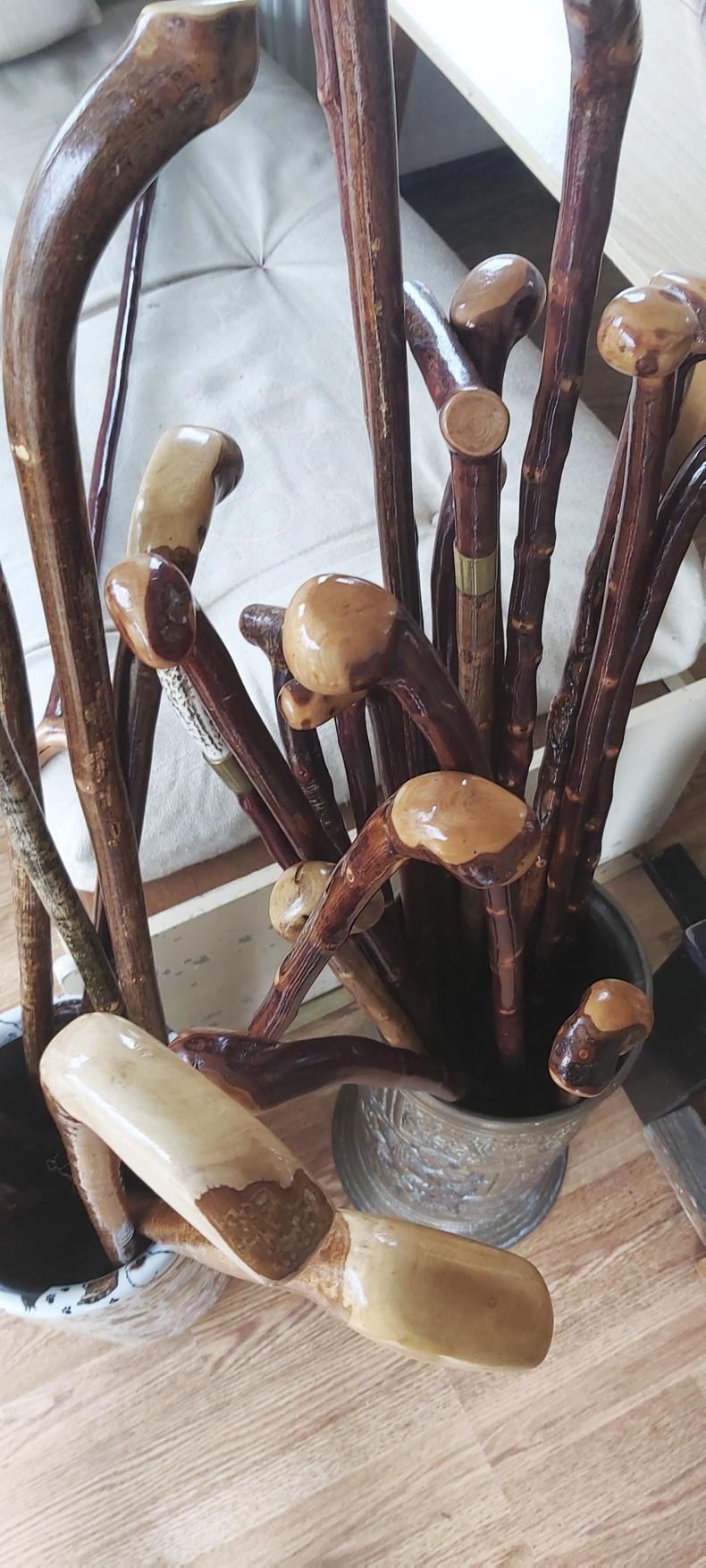
When you’re out walking by the river or out walking in the woods, you just never know what you’re going to find. Sometimes you’ll find very little, but the odd time you’ll find that one piece and you’ll be thrilled to bits with yourself, and you can’t wait to do that stick.
You have to bring it home and put it away for a year and a half. In that year and a half or two year, you have to force yourself not to go at it, because you know you’ll ruin it if you do go at it. It takes time.
Over the years, no matter how many sticks you make, sometimes when one turns out nice, it turns out nice! You’d be thrilled to bits with yourself.
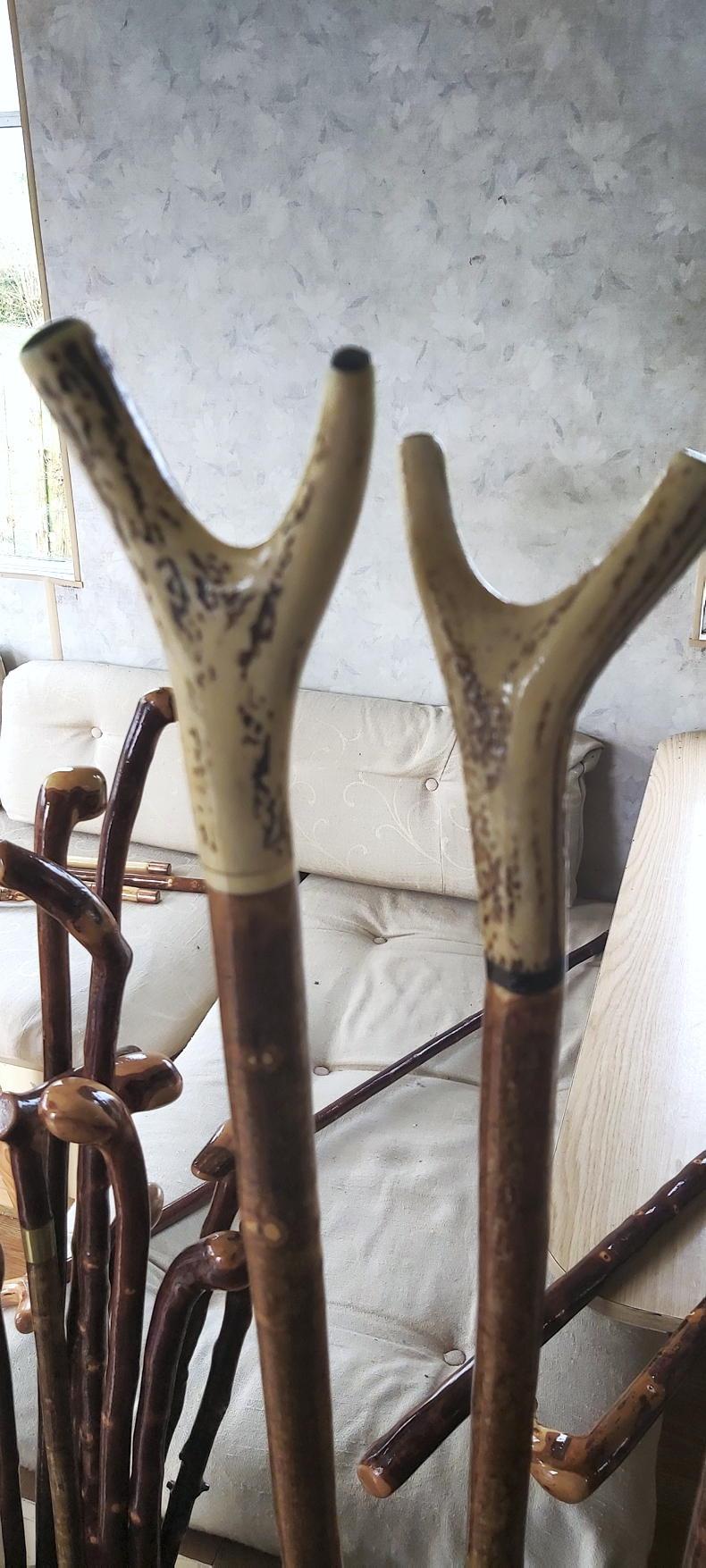
I’ve often had sticks so good, I’d hold onto them for a couple of year before I’d sell them. I’ve sold sticks over the years and I’d be sad for a month after it. They’d be that bit extra special.
I hope to God the shows are on this year. I really do. At the shows – the conversation, the turn of phrase, the fun – I miss it terrible. The Adamstown Show, there’s local people here that don’t know what I make, by doing the show then they see what I do.
You make friends at all of the shows over the years and the same people would always come back to you. It’s a family day out and often it’s where I’d meet neighbours or cousins or friends. You don’t see them from one end of the year to the other.
You meet lovely people and there’s lovely people out there, thanks be to God for that.
Read more
My Country Living: Marathon Man
My Country Living: John Murray of Doon Social Farming "community at heart"
I live in Adamstown, Co Wexford, but I’m originally from New Ross. My father was a tailor in the middle of town. That’s the way we grew up, tailoring. 
My grandfather was a tailor and his father was a tailor before him.
I grew up with suits and I still love a suit. I love clothes. A cap and coat, you couldn’t ask for better. I’ve always dressed well. I’m happy that way.
I went to school in Ross and I worked in engineering all my life. I worked down in Ross and then in Glanbia, it was Waterford Co-Op before that. I spent most of my years working for them. I was happy. That was a different time, a different life, but I always loved a stick.
The beginning
When I was young, I went to see a film below in the Good Counsel College in Ross and I saw five sticks standing on a dresser there. They never left me.
I remember exactly where I cut my very first stick and I know where I cut my last stick too. My first stick was on the railway line between New Ross and Glenmore. My father, God be with him, was a Glenmore man.
As I was growing up then I always tipped away with a stick from time to time. When I retired I did nothing for a year, actually. I got fed up, then I started walking the land, picked up a couple of sticks and worked on them.

I said to myself, if there’s one there’s two and if there’s two there’s more. So I worked away. Over the years it just built up and up. The more you get into it, the more you want to do it. I started selling them at agricultural shows, craft fairs and here at home.
I never advertised and people were always able to find me. Word of mouth is the best source of information of all time. I’ve no time for internet. I’m happy as Larry with word of mouth. I’ve a sign outside the gate now and that sells a few as well.
The process
When you pick a stick, you have to leave it for a year and a half, maybe two year. You have to season it to dry the sap out of it. You have to straighten most of them and the best way to straighten them is to steam them. Then you let it dry for a few days and you can start to sand it and work on it.
Everything is done by hand. I always tell people I have two machines, a left hand and a right hand.

I do a few different types of sticks. I’d do a small talking stick first, then a tipping stick – it’s just a little light stick when you’re out on the road, just tipping away. Then I’d go from that to a knob stick. From there I’d go to staffs, you’d use them for walking the land or walking hills.
I do a lot of blackthorn, a few holly and I do a good bit of hazel. Hazel is a lovely stick for walking with, especially if you’re walking a good distance. The hazel, for a big stick, it’s lovely and light.
The magic
I love the countryside. You walk up a road or you walk up a lane and there’s nothing as nice as standing in a gap or standing at a gate, putting your hand on it and looking around you. The beauty of it.

When you’re out walking by the river or out walking in the woods, you just never know what you’re going to find. Sometimes you’ll find very little, but the odd time you’ll find that one piece and you’ll be thrilled to bits with yourself, and you can’t wait to do that stick.
You have to bring it home and put it away for a year and a half. In that year and a half or two year, you have to force yourself not to go at it, because you know you’ll ruin it if you do go at it. It takes time.
Over the years, no matter how many sticks you make, sometimes when one turns out nice, it turns out nice! You’d be thrilled to bits with yourself.

I’ve often had sticks so good, I’d hold onto them for a couple of year before I’d sell them. I’ve sold sticks over the years and I’d be sad for a month after it. They’d be that bit extra special.
I hope to God the shows are on this year. I really do. At the shows – the conversation, the turn of phrase, the fun – I miss it terrible. The Adamstown Show, there’s local people here that don’t know what I make, by doing the show then they see what I do.
You make friends at all of the shows over the years and the same people would always come back to you. It’s a family day out and often it’s where I’d meet neighbours or cousins or friends. You don’t see them from one end of the year to the other.
You meet lovely people and there’s lovely people out there, thanks be to God for that.
Read more
My Country Living: Marathon Man
My Country Living: John Murray of Doon Social Farming "community at heart"









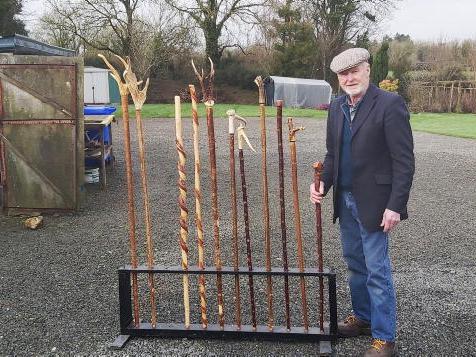
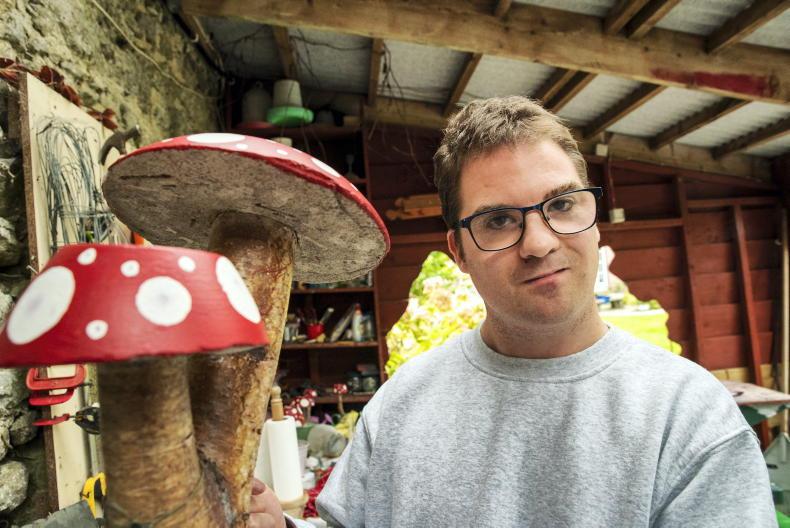
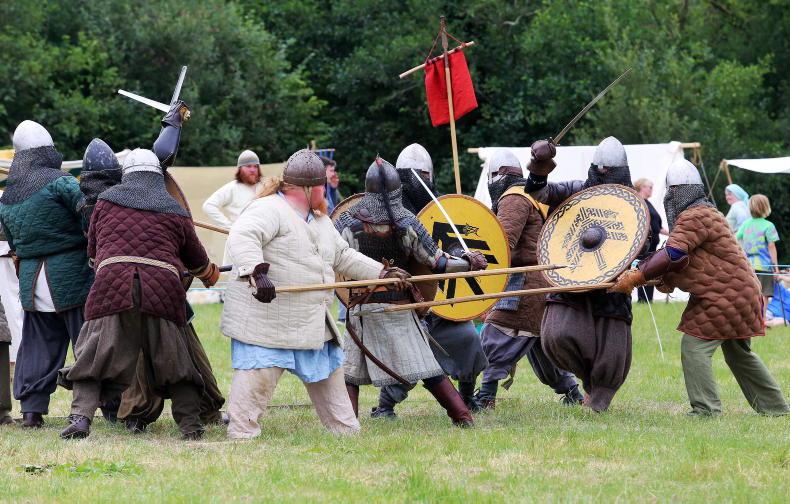


SHARING OPTIONS